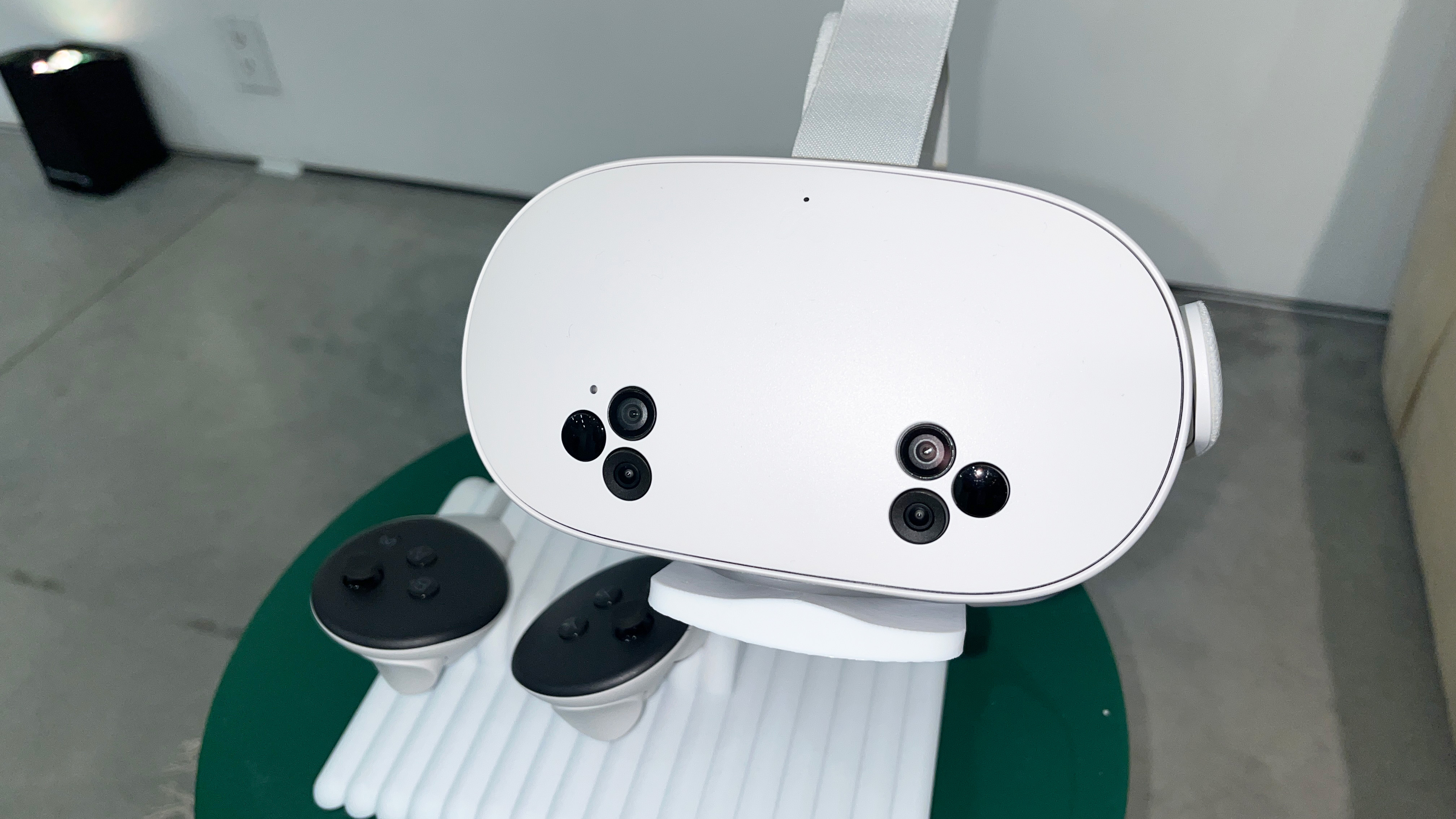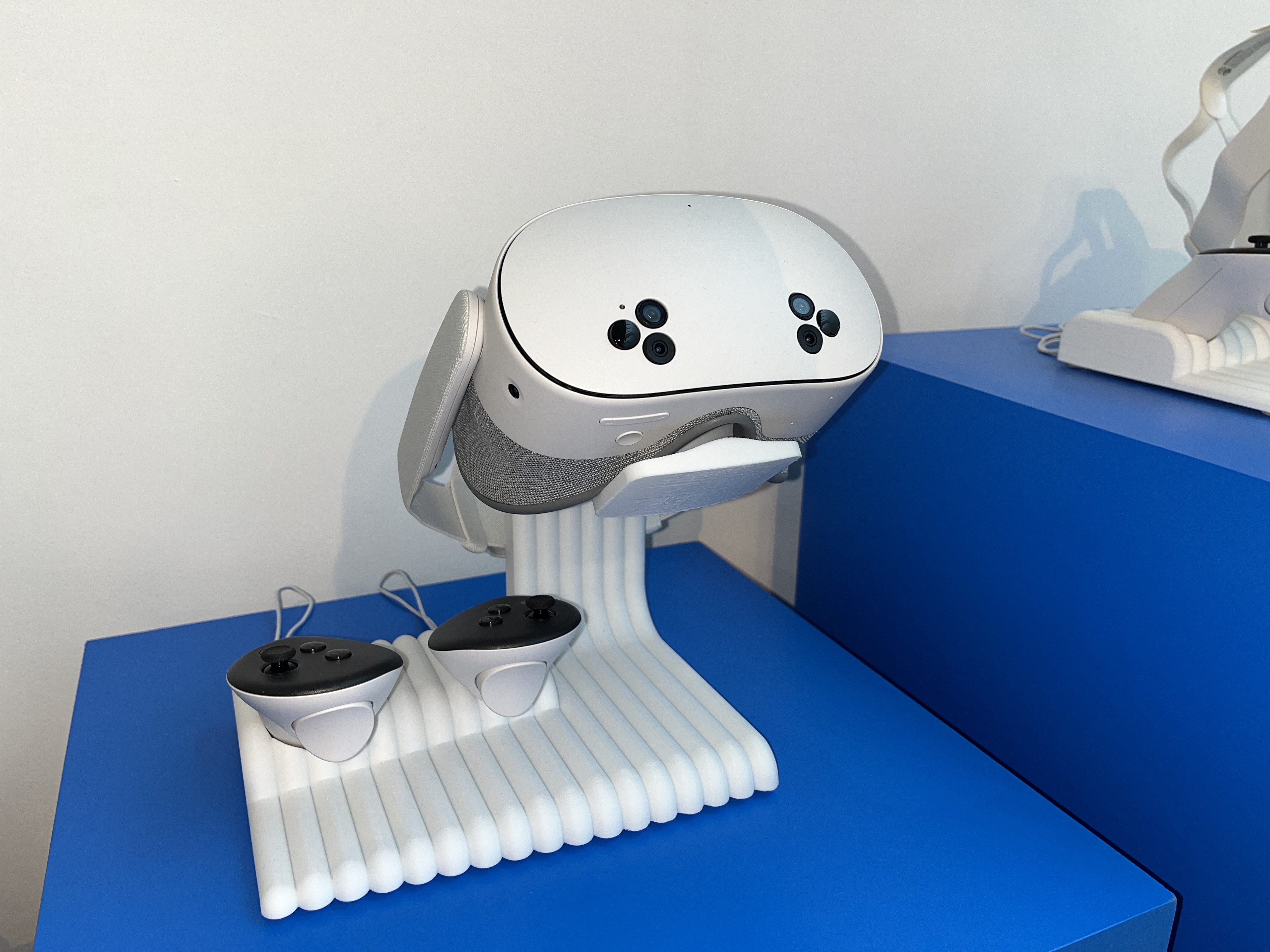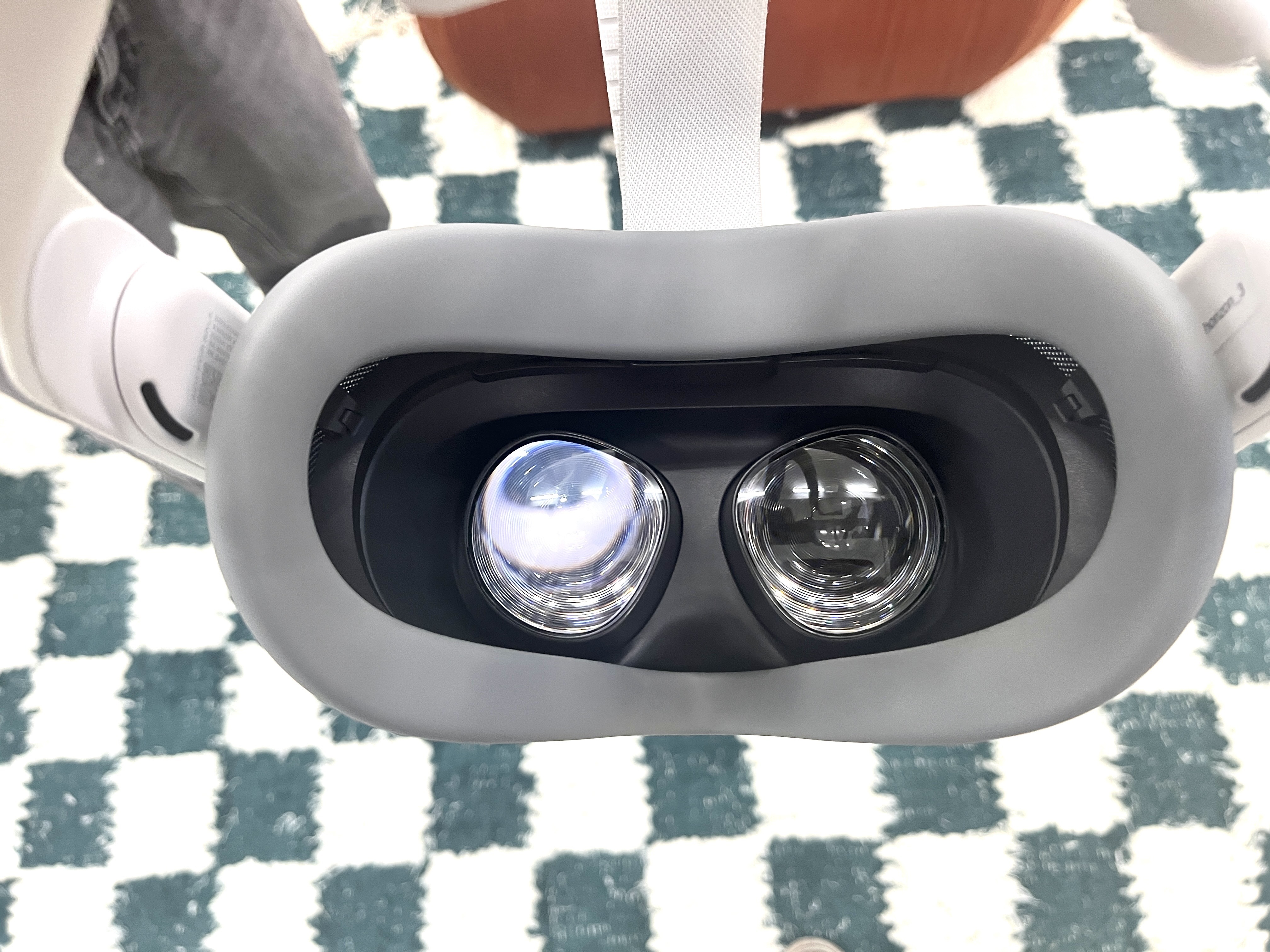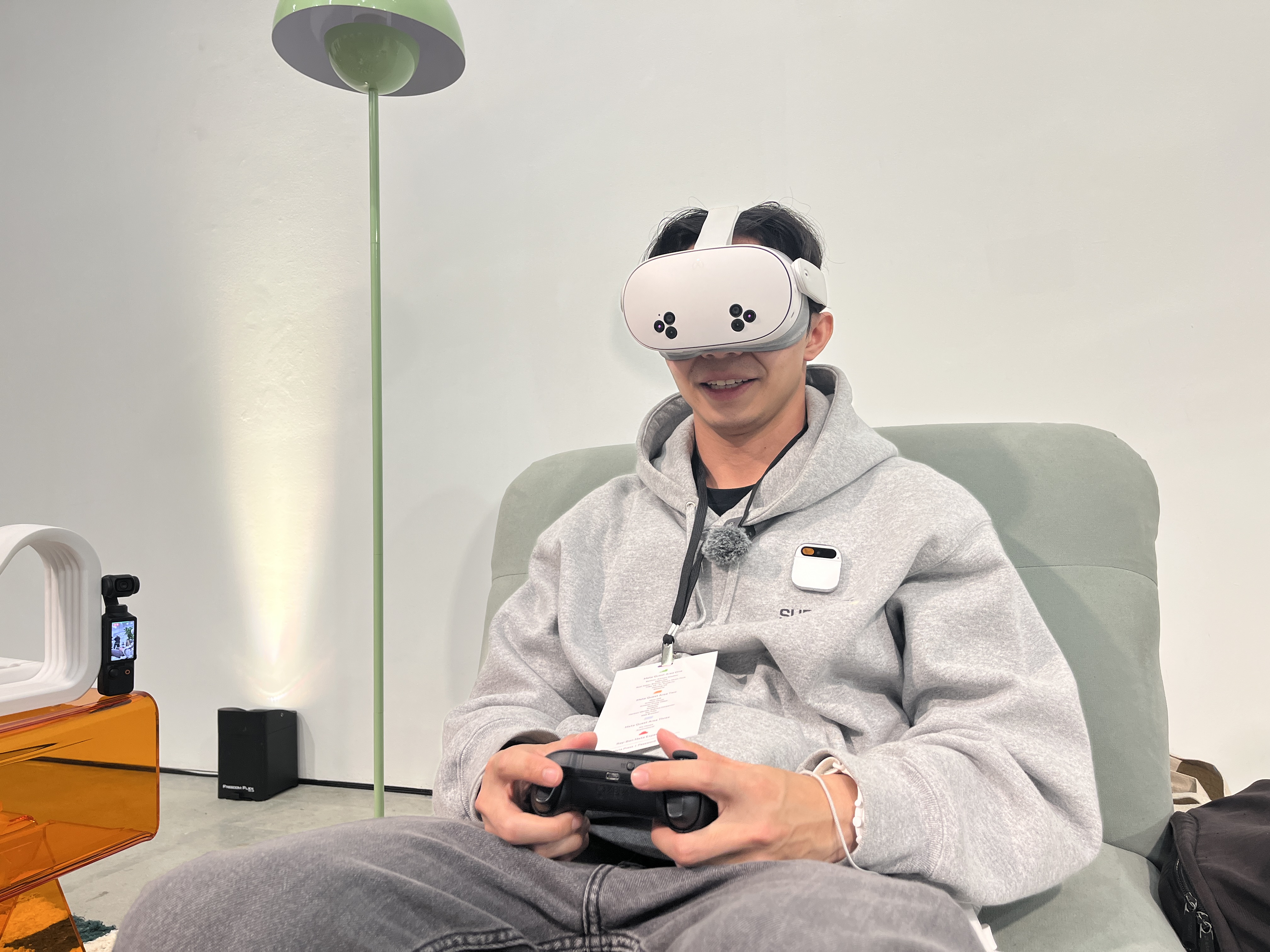I tried the Meta Quest 3S: Is it game over for the Apple Vision Pro?
Apple is going to have to drastically drop the cost of the Vision Pro to compete with mixed reality this polished

Meet the new Quest, same as the old Quest.
In some contexts, that might seem like a dig, but for Meta, it's actually a massive selling point.
The Quest 3S, which launches on October 15, was announced this month at Meta Connect and now holds the title of Meta's most accessible AR/VR headset. For anyone who missed it, the Quest 3S retails for $299, which is $200 cheaper than the retail price of the Quest 3, which hit shelves a year ago.
For reference, that further widens the cost gap between the Quest and Apple's Vision $3,500 Pro headset. Needless to say, that's an aggressively enticing overture to anyone on the fence about buying a headset for the first time.
But you get what you pay for, right? With that much of a cost cut, there have to be some major drawbacks... right? Maybe not, my friends.
I got a chance to try the Quest 3S, and (as a Quest 3 owner) I have to say, this thing could be a checkmate for the Vision Pro.
Meta Quest 3s: Less but not necessarily lesser

There are two major differences between the Quest 3 and the new, cheaper, Quest 3S. One is the resolution; while the Quest 3 has a 2064 x 2208 resolution, the Quest 3S has a slightly lower 1832 x 1920 resolution.
Sign up to receive The Snapshot, a free special dispatch from Laptop Mag, in your inbox.
Second, there's the switch from pancake lenses to Fresnel lenses. This, in theory, could affect the optical quality of the Quest 3S — Fresnel lenses have a tendency to introduce more image distortion and visual artifacts than their more expensive counterparts.
So, the question is: Do either of these significant changes actually translate to a major downgrade in the experience of using a Quest 3S? Well, in my — albeit limited — experience of using Meta's cheapest headset ever, not so much.
I got to test the Quest 3S in a couple of scenarios, one of which was a VR experience with Sabrina Carpenter. While the 180-degree video wasn't always perfect — there was some image distortion, but less when I finally adjusted the lens distance to fit my eyes better — it was more than passable.
I've spent several hours in my Quest 3 playing Xbox on the cloud and will admit that it still has an advantage. But $200 worth of advantage? That's highly debatable.

My second experience was even more telling. I got to try the Quest 3S to play Batman: Arkham Shadow, which comes out as a Quest exclusive on October 22, and put the headset to a gaming test.
Again, the results were pretty clean. Did I get a little motion sick at first? Yes, but that's a complaint of mine for any headset right now. I will say that if the Quest 3S was optically lesser in some obvious way, Batman: Arkham Shadow (or at least the 10 minutes I played) would do a good job of hiding any blemishes — the level I previewed was dark and gritty, which is perfect for carpeting over any low-res visuals.
But again, I don't think that's what's happening here. My third and final demo was using Xbox Cloud on the Quest — an integration I've evangelized in the past — and in a much brighter game (Minecraft Dungeons), the resolution and clarity seemed to be on par with the Quest.
My most significant complaint here is about latency while streaming the game, but it's hard to say if that was a connection issue or even an issue with any of the pre-release software inside the Quest 3S.
All of the hardware felt pretty much the same, too. The Quest 3S was nice and light (it weighs about the same as the Quest 3), and despite being slightly thicker than its forebearer, I didn't feel as though it was clunky. However, I missed the scroll wheel when adjusting the lens distance to fit my eyes. The Quest 3S requires manually adjusting the lenses with your fingers in a few pre-set positions. It's not quite elegant, but it does get the job done.
One thing I didn't get a chance to do is adequately test the Quest 3S passthrough ability, which — with the lack of a depth sensor compared to the Quest 3 — could make certain experiences, like those that involve tracking, less smooth.
Both outlying questions — streaming and the lack of a depth sensor — are definitely on my radar for a future review.
A vision quest

Again, I'll reserve final judgment for when I get a chance to really test the Quest 3S, but right now, Meta's affordable headset looks like the best value on the market.
I'll reserve final judgment for when I get a chance to really test the Quest 3S, but right now, Meta's affordable headset looks like the best value on the market.
Of course, that's not saying much when Apple's premium Vision Pro costs an eye-watering $3,500. Are the experiences of the Vision Pro and the Quest 3S (or Quest 3 for that matter) a 1-1? Definitely not. The Vision Pro has a mind-blowing OLED display with a first-of-its-kind hand/eye tracking input system and all of Apple's app integration to go with it.
Mixed reality headsets are still effectively toys and unless you're unusually well-to-do, then nearly $4,000 is probably too much of an expense to justify.
I can't say for sure what the future holds — Apple may very well offer a much cheaper Vision Pro headset that totally resets the value proposition of headsets — but I can say that as of right now, the Vision Pro has its work cut out.

James is Senior News Editor for Laptop Mag. He previously covered technology at Inverse and Input. He's written about everything from AI, to phones, and electric mobility and likes to make unlistenable rock music with GarageBand in his downtime. Outside of work, you can find him roving New York City on a never-ending quest to find the cheapest dive bar.
